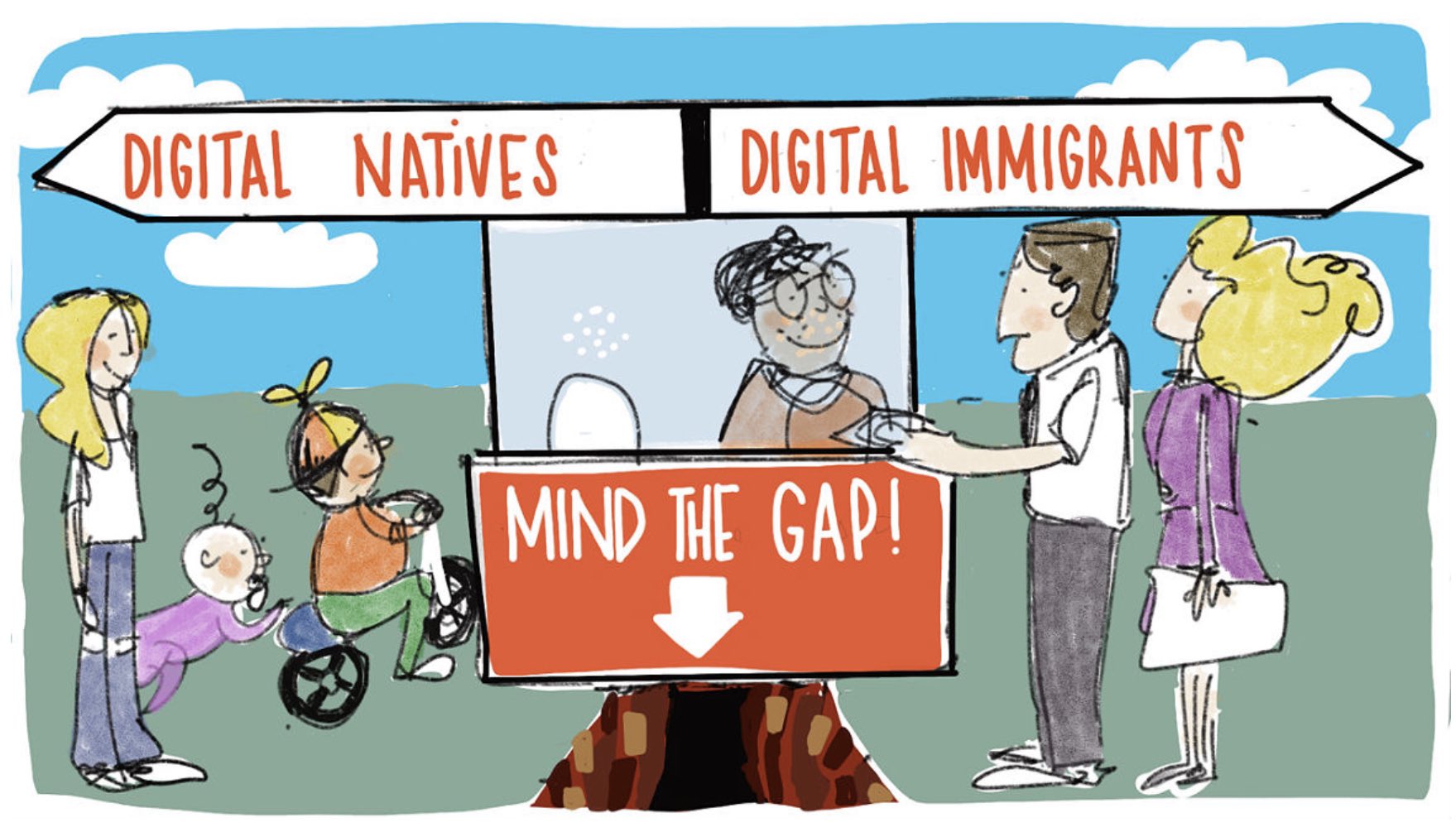There is an ongoing debate in academia(when isn't there) between the
validity of the theory of digital natives and digital immigrants. This
theory was first coined in 2001 by Marc Prensky, who effectively argued that
there is a drift between the information processing of current generations
versus older generations that parallels the mass-adoption of technology. In
short, older generations (who adopted technology as it was created) have a
disadvantage in their use compared to younger generations which were born using
it. Prensky called the first group Digital Immigrants while calling the second
Digital Natives. Prensky argues that this "disadvantage" manifests
particularly strongly in the educational sectors, where digital immigrants are
using tried and true teaching methodologies that predate todays technological
advancements. Their students (mostly Digital Natives), however, are adjusted to
a technologically saturated world. This saturation has led to significant
differences in the structure of learning between these two groups.
Prensky effectively argues that the disconnect is a product of divergent a neurological
evolution. These changes may manifest as a lack of interest or attention for
topics presented in a way more familiar to Digital Immigrant. For
example, Digital Natives have lifetime access to(and therefore have developed
passive skills to interpret) massive pools of information and databases. Where
once the issue was obtaining enough sources for work (and maybe memorizing the Dewey
decimal system), the more prominent issue is obtaining quality sources. Lessons
based on learning how a library sorts information are superfluous to a
generation that googles information. The proliferation of online games in the
information era also serves to reinforce learning and behavioral changes. Video
game design has long focused on incorporating learning the game into the
gameplay itself. Skill and understanding in games is an emergent property, it
doesn't come from reading the manual. Prensky likewise, argues that a similar
approach in education could help maintain student attention and information
retention. In short, he argues that the inability of teaching methods to adapt
to a new generational psychological paradigm is a larger problem than the
capacity of the students to learn themselves.
However, like all good theories, there are valid counter arguments. Paul
Kirschner argues that being a digital native does not make one digitally literate.
To put this in a simpler way, inheriting an asset does not make you proficient
in its use. This is an important distinction. Simply having a lifetime access
to a tool, does not make you equipped to recreate the tool, trained to use the
tool, or able to adapt the tool for additional uses. For example, access to a
calculator does not make you a more literate user of math, able to reproduce
the calculations or teach you how to build a calculator. Kirschner’s point is
that the assumption that digital saturation leads to digital literacy is unfounded.
Competency is not a natural biproduct of purely environmental conditions.
Kirschner, P. A., & De Bruyckere, P. (2017). The myths of the digital native and the Multitasker. Teaching and Teacher Education, 67, 135–142. https://doi.org/10.1016/j.tate.2017.06.001
Prensky, M. (2001, October). Digital Natives, digital immigrants. Retrieved October 22, 2021, from https://www.marcprensky.com/writing/Prensky%20-%20Digital%20Natives,%20Digital%20Immigrants%20-%20Part1.pdf.

No comments:
Post a Comment